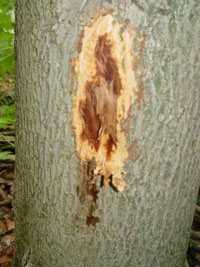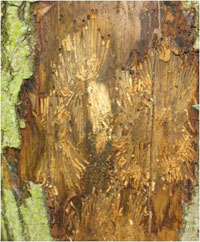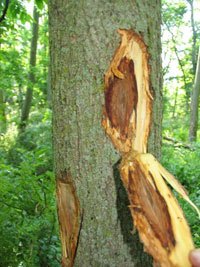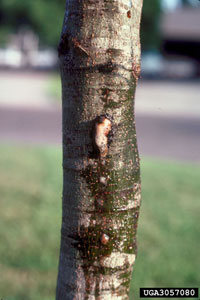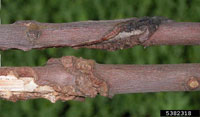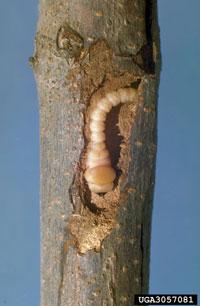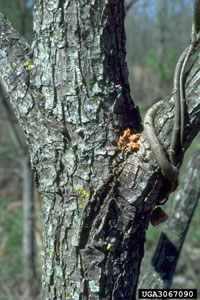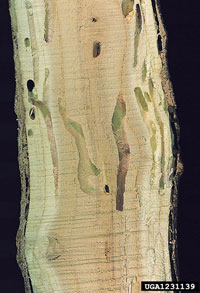Extension > Garden > Diagnose a problem > What's wrong with my plant? > Deciduous Trees > Hickory > Sap or liquid oozing from cracks in bark
Hickory > Trunk/Branches > Sap or liquid oozing from cracks in bark
1 of 3
Hickory decline
Ceratocystis smalleyi and
Scolytus quadrispinosus
- Leaves are wilted or undersized, thin canopy with dead branches
- When bark is peeled back, numerous reddish brown oval cankers up to 1 ft. long can be seen
- Bark surface often shows no symptoms, occasionally cracking or dark sunken area can be seen
- Dark bleeding spots that appear in May or June indicate cankers below the bark
- Groups of young green shoots (sprouts) often form along the trunk; these wilt and die within a year
- Round 1/8th inch exit holes of hickory bark beetles on upper trunk
- Larval galleries often visible in discolored sapwood
- Trees can decline and die in as little as two years when beetle populations are high
- More information on Hickory decline
2 of 3
Flatheaded appletree borer
Chrysobothris femorata
- White froth usually oozes from cracks in bark
- Dead branches in crown of older trees
- Bark becomes sunken at site of injury; bark may crack later
- Injured areas become larger and deform with annual attacks
- Young and stressed trees are most at risk
- Larvae are cream-colored, flattened bodies, about 1 inch long
- Long tunnels under the bark girdle trees and cause structural weakness
- More information on Flatheaded appletree borer
3 of 3
Longhorned beetles
Redheaded ash borer, Neoclytus acuminatus, and Living-hickory borer, Goes pulcher
- Entrance holes at branch crotches can ooze sap and frass
- Exit holes, 1/4 - 3/8 inch wide, first appear in June
- Galleries start in phloem and eventually enter into sapwood; generally not very serpentine
- Larvae are 3/4 to 1 inch long, cylindrical shaped bodies
- More information on Longhorned beetles



